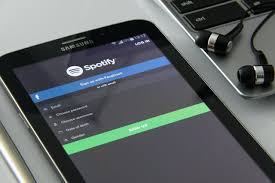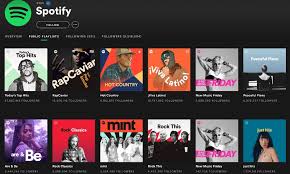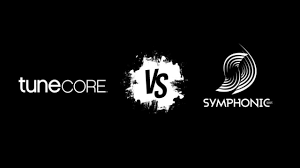Spotify has evolved far beyond just a music streaming app. In 2025, it’s a platform with over 602 million active users and 187 million ad-supported listeners (as of Q1 2025), making it a tempting place for artists, small businesses, and global brands to invest their ad dollars. But is advertising on Spotify really worth it?
This article offers a grounded, data-driven breakdown of Spotify advertising—including its real costs, actual reach, success metrics, targeting options, and whether it’s the right fit for your campaign goals.
Let’s dig into the real details behind Spotify ads before you spend a cent.

What Exactly Is Spotify Advertising?
Spotify advertising refers to audio, video, and display ads that run across the free version of Spotify. These are targeted to users who aren’t paying for Spotify Premium and are delivered between songs, on home screens, or during podcast sessions.
Spotify offers two main advertising solutions:
Spotify Ad Studio – A self-serve ad platform for smaller budgets (minimum ~$250 per campaign).
Spotify for Brands – Enterprise-level campaigns for agencies or major corporations, offering full creative support and broad-scale reach.
How Much Does It Cost to Advertise on Spotify?
One of the most commonly asked questions is, “How much does it actually cost to advertise on Spotify?” The answer depends on several factors like location, audience size, campaign length, and ad format.
Estimated Spotify Ad Costs (2025):
| Ad Format | Average CPM (Cost per 1,000 Impressions) | Notes |
|---|---|---|
| Audio Ads | $15 – $25 | 30 seconds max, skippable or non-skippable |
| Video Takeovers | $20 – $30 | High-visibility home screen placements |
| Podcast Sponsorships | $18 – $50+ | Based on niche & listener base |
| Display Ads | $10 – $20 | Companion banners or overlays |
For Spotify Ad Studio, campaigns start at $250 minimum spend, and you can target by location, age, gender, device, listening habits, and genre.
Is Spotify Advertising Effective?
So, is advertising on Spotify worth it in terms of real results?
Here’s what Spotify’s internal and third-party research has shown:
41% of Spotify Free users recall audio ads after one exposure.
Podcasts on Spotify drive 1.6x higher brand awareness compared to traditional audio.
Ad Studio campaigns with music-related targeting have 2.3x click-through rates over generic ads.
Video ads on Spotify show +24% lift in ad recall versus YouTube in some brand studies.
These aren’t just vanity metrics—they reflect actual user engagement, especially among 18–34-year-old listeners.
Spotify’s strength lies in high-quality targeting: You’re not just advertising to “music listeners,” but to specific genres, moods, listening times (commute, workout), and even devices (mobile vs. desktop vs. smart speaker).
Real Use Cases: When Spotify Ads Make Sense
1. Indie Artists Releasing a New Single
Spotify lets you run audio ads with your song’s hook as a 30-second clip, encouraging listeners to follow your artist page or save your track.
Best audience targeting: Genre (hip hop, EDM, indie rock), mood (chill, party), age range 18–34.
Expected ROI: Modest reach, but higher engagement than Instagram or Facebook ads for music-specific content.
2. Brands in the Fitness, Food, or Fashion Space
Spotify ads are effective for brands that align with lifestyle and mood—e.g., promoting protein bars during workout playlists or sustainable fashion during “chill” listening blocks.
Best ad formats: Video takeovers + display banners.
ROI: Higher recall and CTR than Google Display Ads in some A/B tests.
3. Podcast Sponsorship for Authority-Building
If you're a service-based business (e.g., coaching, B2B SaaS), podcast ads offer higher trust and less ad fatigue. Spotify’s exclusive podcast inventory makes it easy to buy host-read ads in your niche.
Limitations and When Spotify Ads Might Not Be Worth It
Spotify ads aren’t a silver bullet. Here’s when they might not be worth the investment:
If you need direct conversions: Spotify isn’t a click-heavy platform. Most audio ads don’t generate direct sales—they’re better for awareness or brand recall.
If your product isn’t audio-friendly: Text-heavy ads or complex offers don’t work well in audio format.
If you have a very small budget: Under $250? You won’t get far. In that case, YouTube pre-rolls or Instagram Reels may offer better short-term ROI.
Spotify doesn’t offer retargeting or pixel-based tracking, which limits your ability to follow up with warm audiences outside of the app.
Expert Tips for Running Effective Spotify Ad Campaigns
Write like a radio ad, not a social post. Clarity and brevity matter. Use a strong hook in the first 5 seconds.
Use Spotify’s voiceover tools—they offer free voice actors in Ad Studio.
Split test your campaigns by running different versions of your audio with slight tweaks in script or music.
Start local. Geotargeting specific cities can bring better results than going national with a generic message.
Use companion banners. Always pair audio with clickable display units to help with action-taking.
Conclusion: Is Advertising on Spotify Worth It in 2025?
Yes—for awareness, storytelling, and audio-focused engagement, Spotify ads are absolutely worth it. Especially if you're a music artist, podcast sponsor, or lifestyle brand looking to reach an on-the-go, music-loving audience.
However, if your goal is short-term conversions or tracking user behavior across platforms, you might need to supplement Spotify with platforms like Meta or Google Ads.
Spotify advertising isn't for everyone—but when it fits your goals, the results can be uniquely powerful.
FAQ: Spotify Advertising
How much does it cost to advertise on Spotify?
The minimum spend through Ad Studio is $250. CPMs range from $10 to $30 depending on format.
Can indie musicians advertise on Spotify?
Yes, Spotify Ad Studio is designed specifically for artists, starting at affordable rates.
Do Spotify ads work for non-music brands?
Absolutely. Brands in wellness, food, fashion, and tech use Spotify for branding-focused campaigns.
Can you track conversions from Spotify ads?
Spotify doesn’t support direct conversion tracking like Meta or Google Ads, so use custom URLs or branded search terms.
What’s the best ad format for engagement?
Audio ads with companion banners generally perform best across genres and audiences.
Learn more about AI MUSIC







